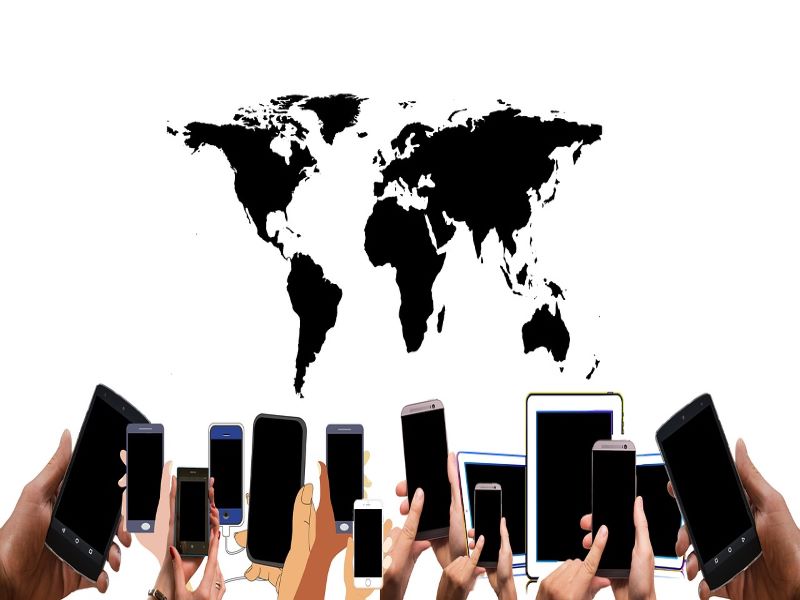 Smartphone Market | India
Smartphone Market | India India only among top three smartphone markets to record growth in Sep qtr
New Delhi/IBNS: India was the only smartphone market in the global top three which showed a year-on-year growth in shipments in September quarter this fiscal while the other two, United States and China, recorded a decline compared to the same quarter last year, according to International Data Corporation (IDC).
A record 54.3 million units were shipped during the quarter with 17% YoY growth in the crucial third quarter of the year.
The reopening of the country with fewer restrictions was further fueled by pent-up demand in July and August and channel stocking in September to meet the upcoming Diwali quarter demand, said IDC
In the wake of Covid-19, eTailers led the online channel share reaching an all-time high of 48%, growing by a healthy 24% YoY.
"Cautious consumers preferred online purchases as they were driven by promotions and sale events on eTailer platforms," the report said.
Offline channels registered a moderate 11% YoY growth after a challenging first half of the year. New launches had severe supply constraints in offline channels.
The online channels will continue to driven by more affordability initiatives and pricing aggression in comparison to offline channels during the festive months, even as supply starts to normalize for the offline channels.
The reports said ASPs (average selling price) declined by 2% YoY at US$156, with 84% of shipments in the sub-US$200 range (29% below US$100), driven by e-learning requirements since smartphones remain the only device for internet access for most households in India.
The mid-range segment (US$200<500) declined YoY, as consumers held back on upgrading to a more expensive smartphone due to economic uncertainties.
However, the premium segment (US$500+) witnessed a strong growth of 91% YoY; where Apple, Samsung, and OnePlus continued to be the top three players.
Apple also launched its online store in 3Q20, offering a wide range of first-time services.
As far as market share is concerned, Xiamomi continued to be the market leader for three years at a stretch, shipping 13.5 million units in 3Q20, a growth of 7% YoY compared to 12.5 million in the year-ago period.
Xiaomi’s Redmi 8A Dual, Redmi 8, and Redmi Note 9 were the top three models nationally despite Xiaomi facing supply constraints in the early weeks of the quarter. Xiaomi also maintained the lead in the online channel with a 35% share, with POCO (sub-brand under Xiaomi) reaching an all-time high of more than 1 million shipments in 3Q20.
Samsung at the second slot registered strong YoY growth of 38% in 3Q20 with record shipments of 12.1 million units, IDC's report said.
India became Samsung’s largest smartphone market globally, ahead of the US in 3Q20, accounting for 15% of its global shipments. It maintained steady supplies through the quarter in comparison to China-based vendors, clubbed with more offerings in low-end and mid-range price segments. Samsung also benefited from the anti-Chinese sentiments prevailing in the initial weeks of the quarter, which soon vaporized in the latter half.
The online channel accounted for 43% of Samsung shipments, witnessing unprecedented growth in 3Q20 with the Galaxy M21 and M31 featuring in the top 5 online models nationally.
Vivo, Realme, Oppo occupied the third, fourth and fifth positions with 9 million, 8 million, 6.1 million shipments, respectively.
"This healthy growth in shipments in 3Q20 is expected to continue through October and early November during the festive months. However, the double-digit growth anticipated for H2'20 may not be able to make up for the challenging first half of the year," Navkendar Singh, research director, client devices and IPDS, IDC India, said in a statement.
Support Our Journalism
We cannot do without you.. your contribution supports unbiased journalism
IBNS is not driven by any ism- not wokeism, not racism, not skewed secularism, not hyper right-wing or left liberal ideals, nor by any hardline religious beliefs or hyper nationalism. We want to serve you good old objective news, as they are. We do not judge or preach. We let people decide for themselves. We only try to present factual and well-sourced news.







